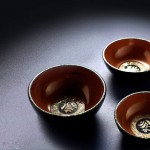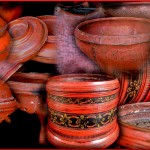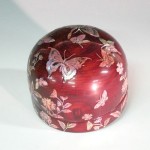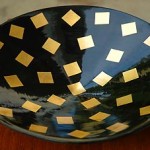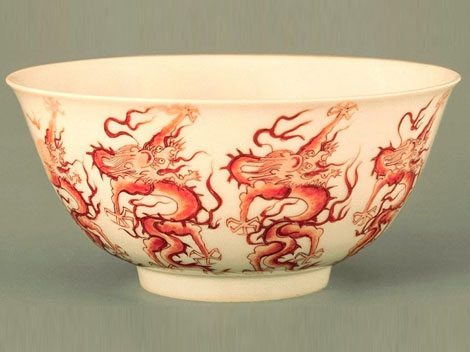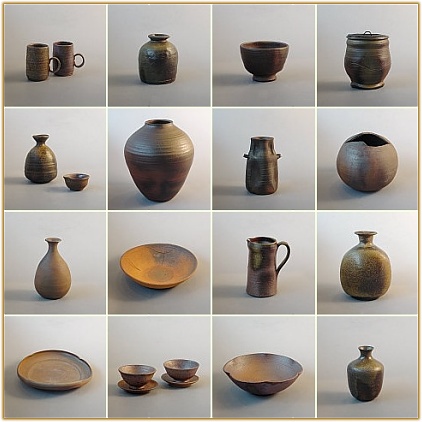Lacquer is a natural substance obtained from the lacquer tree which has its home in China, a country still leading the world in lacquer resources. Much of the country is suitable for growing the tree, but most of the output comes from five provinces-Shaanxi, Hubei, Sichuan, Guizhou and Yunnan. Raw lacquer is the sap of the lacquer tree, which hardens in contact with air. A tree becomes productive 3-5 years after planting, and entails hard work on the part of the tapper. He can only get the latex in June and July each year and must tap it in the predawn hours before the cocks crow and sunrise. For the sun would reduce the moisture in the air, stopping the flow of the latex.
Lacquer ware has a long history which extends back to the remote ages in China. From the Neolithic remains at Tuanjie Village and Meiyan Township (both in Wujiang County, Jiangsu province) were unearthed in 1955 a number of lacquer-painted black pottery objects, two of which, a cup and a pot, were discovered intact and found to bear patterns painted in lacquer after the objects had been fired.
They are the earliest lacquered articles even discovered in China and are now kept in the Museum of Nanjing. Before the invention of the Chinese ink, lacquer had been used for writing. Twenty-eight bamboo clips found in a Warring States(475-221 B.C) tomb at Changtaiguan, Xinyang, Henan province, bear a list of the burial objects with the characters written in lacquer.
Lacquer ware is moisture-proof, resistant to heat, acid and alkali, and its colour and lustre are highly durable, adding beauty to its practical use. Beijing, Fuzhou and YangZhou are the cities leading in the production of Chinese lacquer ware.
The making of Beijing lacquer ware starts with a brass or wooden body. After preparation and polishing, it is coated with several dozen up to hundreds of layers of lacquer, reaching a total thickness of 5 to 18 millimetres. Then, gravers will cut into the hardened lacquer, creating “carved painting” of landscapes, human figures, flowers and birds. It is then finished by drying and polishing.
Traditional Beijing lacquer objects are in the forms of chairs, screens, tea tables, vases, etc. Emperor Qianlong of the Qing Dynasty, an enthusiast for lacquer ware, had his coffin decorated with carved lacquer. Yangzhou lacquer articles are distinguished not only by carving in relief but by exquisite patterns inlaid with gems, gold, ivory and mother of pearl. The products are normally screens, cabinets, tables, chairs, vases, trays, cups, boxes and ashtrays.
Fuzhou is well-known for the “bodiless lacquer ware”, one of the “Three Treasures” of Chinese arts and crafts (the other two being Beijing cloisonné and Jindezhen porcelain). The bodiless lacquer ware starts with a body of clay, plaster or wood. Grass linen or silk is pasted onto it, layer after layer, with lacquer as the binder. The original body is removed after the outer cloth shell has dried in the shade. This is then smoothed with putty, polished, and coated with layers of lacquer. After being carved with colourful patterns, it becomes the bodiless lacquer ware of extremely light weight and exquisite finish.




